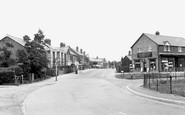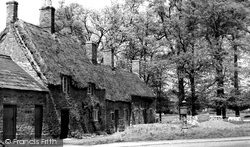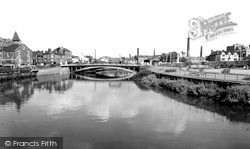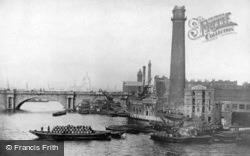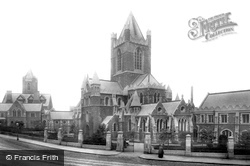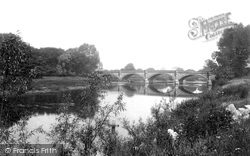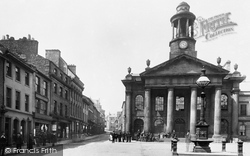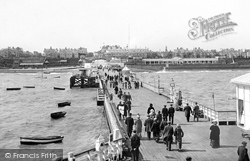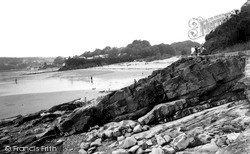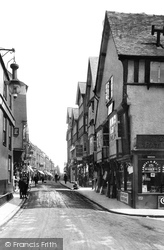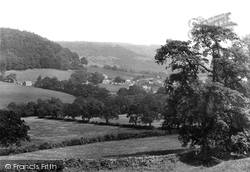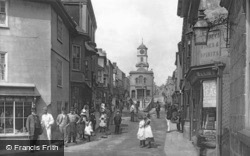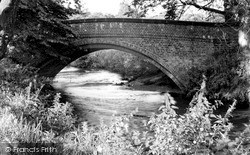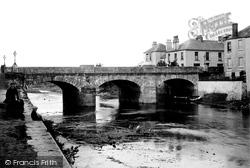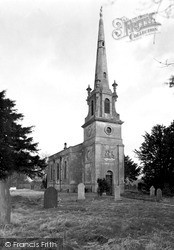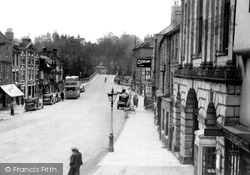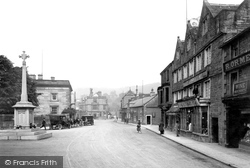Places
1 places found.
Those places high-lighted have photos. All locations may have maps, books and memories.
Photos
Sorry, no photos were found that related to your search.
Maps
10 maps found.
Books
Sorry, no books were found that related to your search.
Memories
293 memories found. Showing results 11 to 20.
Living In Chilton
My family moved to Chilton Foliat and took over the "Old Post Office". I was still young then and went to the old school run by Mr & Mrs Hassall who lived next door to the school. Two classrooms and very fond memories. At ...Read more
A memory of Chilton Foliat in 1964 by
Croydon Thornton Heath And Norbury
I was born and brought up in Croydon and although I now live in the Channel Islands I still regard it as my home. I remember living in Northborough Road, Norbury and attending Norbury Manor Infants School only ...Read more
A memory of Croydon in 1963 by
Cheadle In The Second World War
I think that we must have moved to Cheadle around 1938, because I was born in Newcastle under Lyme, but my younger sister was born in Cheadle in 1939. At that time we lived on Leek Road. We had various ...Read more
A memory of Cheadle in 1930 by
Pontypool Town Centre
I lived in Upper Bridge Street and remember a few of the shops in town, I think! On the corner of Upper Bridge Street and the Bell Pitch was Franketti's fish shop with an awesome Art Nouveau till and free chips if you took ...Read more
A memory of Pontypool in 1960 by
Town Hall Roundabout
Living in Watford from the early 1950's, I well remember the Town Hall roundabout before they moved it. Can't recollect whether it was nearer or further away. I can recollect, not far from a pub called the OBH, or almost opposite ...Read more
A memory of Watford in 1952 by
Evacuation To Fonab Castle Sept.1939
Evacuation - September 3rd 1939 The government decided that mothers and children should be moved to the countryside away from areas at risk from bombing. On the 3rd, parents and children all gathered at their ...Read more
A memory of Pitlochry in 1930 by
Growing Up In Pembridge
I was born in 1960 at Glanarrow Cottages, Bridge St. All my early memories are of a happy childhood. I can remember the deep snow of 1963, when I opened the back door it seemed that the snow was halfway up it!!! I can also ...Read more
A memory of Pembridge by
1950s
I was born in the war years in the area where the Workmen’s Club was later built and later moved to Hall Lane Est ( 28) as the first intake. I remember well the coal loader at the end of Railway Terrace and the great times out and about around ...Read more
A memory of Crook by
My Memories Of Selly Oak And Bournbrook
I was born Anne Shirley Crofts back of 622 Bristol Road (opposite where Aldi is now) in July 1944, brother Ronnie was born 1940, sister Vivienne was born 1942, and Alan was born 1947, between Riverton Road ...Read more
A memory of Selly Oak in 1954 by
46 Bridge Road, Cove
46 Bridge Road at Cove is very significant to me because I was born in Bridge Road, no 46, on 29th June 1943, in the photo of Bridge Road it is the second house on the left, opposite Cove Supply Stores, so I'm sure my mother would ...Read more
A memory of Cove in 1943 by
Captions
118 captions found. Showing results 25 to 48.
These delightful ironstone cottages stand in the lee of the trees; nearby lies Barton Hall, reputed to have been built with stones from a 14th-century castle here.
There has been a bridge at Warrington since the 13th century, when the town centre began to develop in its present location away from the medieval village off Church Street.
St Paul's rises above the bridge, which was opened in 1817 by the Prince Regent. It was replaced in 1942 by the present crossiing designed by Sir George Gilbert Scott.
Christchurch Cathedral and the former Synod Hall (now Dublinia).
From the 16th-century tower of St Andrew's Church, established by monks from Bridlington some 900 years ago, we see the bridge over the Swale and the white Bridge Inn (centre). 17th-century cottages stretch
The gatehouse and gardeners' cottages on the approach to Errwood Hall at Goyt's Bridge in the Goyt Valley.
Well south of the bridge and 'Roytown', the parish church sits aloof.
Well south of the bridge and 'Roytown', the parish church sits aloof.
Situated between the Hall and the village, Kelham Bridge's one claim to fame is that it was rammed and split in two by a small iceberg that floated down the Trent during the winter of 1854–55.
The old Town Hall was erected around 1781 on the site of an earlier town hall. Major Thomas Jarratt was the designer of the building, which opened in 1783.
From left to right can be seen the Blockhouses, the Venetian Bridge, the Royal Hotel, the flagstaff, the Band Pavilion and the old Town Hall clock.
Frith's Victorian photographer was in the lane leading to the abbey gateway, and looking across the Market Place to what is now undoubtedly the finest building in Abingdon: the Town Hall.
We are looking from Coppet Hall Point.
Further up the village is High Hall, built by the Craven family.
The building on the right is the Booth Hall, also known as the Round House, perhaps so called because it was possible to walk all round it without obstruction.
Marske is an attractive and unusual Swaledale village, neither nuclear nor linear, nestling in a fold of hills just above the River Swale.
This ancient borough and market town is most famous for its fine-grained granite, which was used in the construction of Waterloo Bridge.
Pownall Bridge over the River Bollin carries the public footpath that runs from Wilmslow along the river bank to Styal.
The Pannier Market Hall is a delightfully ancient building, recently refurbished. The bridge, with its many arches, each of a different span, is 13th-century.
The wall on the left on which the child is sitting has since been extensively redeveloped as the river frontage for a shopping development. It is now a series of steps leading down to the water.
The 4th Earl, known as the building Earl, enlarged Stapleford Hall, the ancestral home, built a bridge at Melton Mowbray, and the Town Hall at Market Harborough.
We are looking towards Telford's bridge. Load Street is short but wide. The substantial-looking structure on the right with the Doric pilasters is the Town Hall, completed in 1808.
The 4th Earl, known as the building Earl, enlarged Stapleford Hall, the ancestral home, built a bridge at Melton Mowbray, and the Town Hall at Market Harborough.
The view looks along Bridge Street towards the river. The Original Bakewell Pudding Shop is located further along on the right hand side. Stewarts Clothing Hall is the major building on the right.
Places (1)
Photos (0)
Memories (293)
Books (0)
Maps (10)



